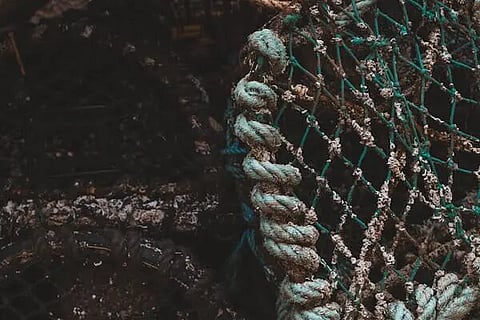

Scientists in Norway are developing biodegradable fishing gear to reduce plastic pollution in the ocean and prevent harmful microplastics.
Photo by Ellie Burgin.
A team of Norwegian scientists is working on biodegradable fishing gear that naturally breaks down without releasing harmful microplastics to replace conventional synthetic ropes, nets, and lines.
Industry, universities, research institutions, and advocacy groups are involved in this project, primarily focused on solving the problem in fisheries that use bottom trawling and Danish seines, which release large amounts of plastic into marine environments.
As Christian Karl, a researcher from SINTEF and polymer chemist leading the biodegradability testing for the D-Solve project, states, conventional materials can take centuries to disappear.
Additionally, Roger Larsen, professor at UiT The Arctic University of Norway, assures: "In 2022, for example, no less than 40 kilometers (24 miles) of Danish seine rope was recovered – found by chance and never reported as lost."
The initial plan of the project consists of four phases: developing biodegradable fishing gear, designing simpler gear for recyclability, supporting industrial-scale production, and ensuring effective recycling.
The team is already testing a biodegradable alternative that fully decomposes within a few years across different marine environments. The catch efficiency is very similar, which gives hope for finding more sustainable solutions.
"The tests will continue for at least three years, or until the materials have completely degraded. We will study microbiological, UV, thermal and chemical degradation in detail," Karl detailed.
According to the scientists, the nets are the most challenging to create, as they must be thin and invisible to the fish while also being strong and elastic. The Dutch company SENBIS has developed bio-polyester for the rope arms that guide the fish toward the net.
"This soon becomes too expensive for fishermen with small quotas. We need cheaper alternatives, such as wood fiber, animal hide or cotton," Larsen warned.
In addition, the mixed waste fractions and the presence of other materials such as steel or lead cores or copper coatings hinder recycling.
"We know the solutions exist; we just have to crack the code at a material level. What we can guarantee is that the materials will have a 'life in the ocean' of much less than several hundred years," Karl concluded.
